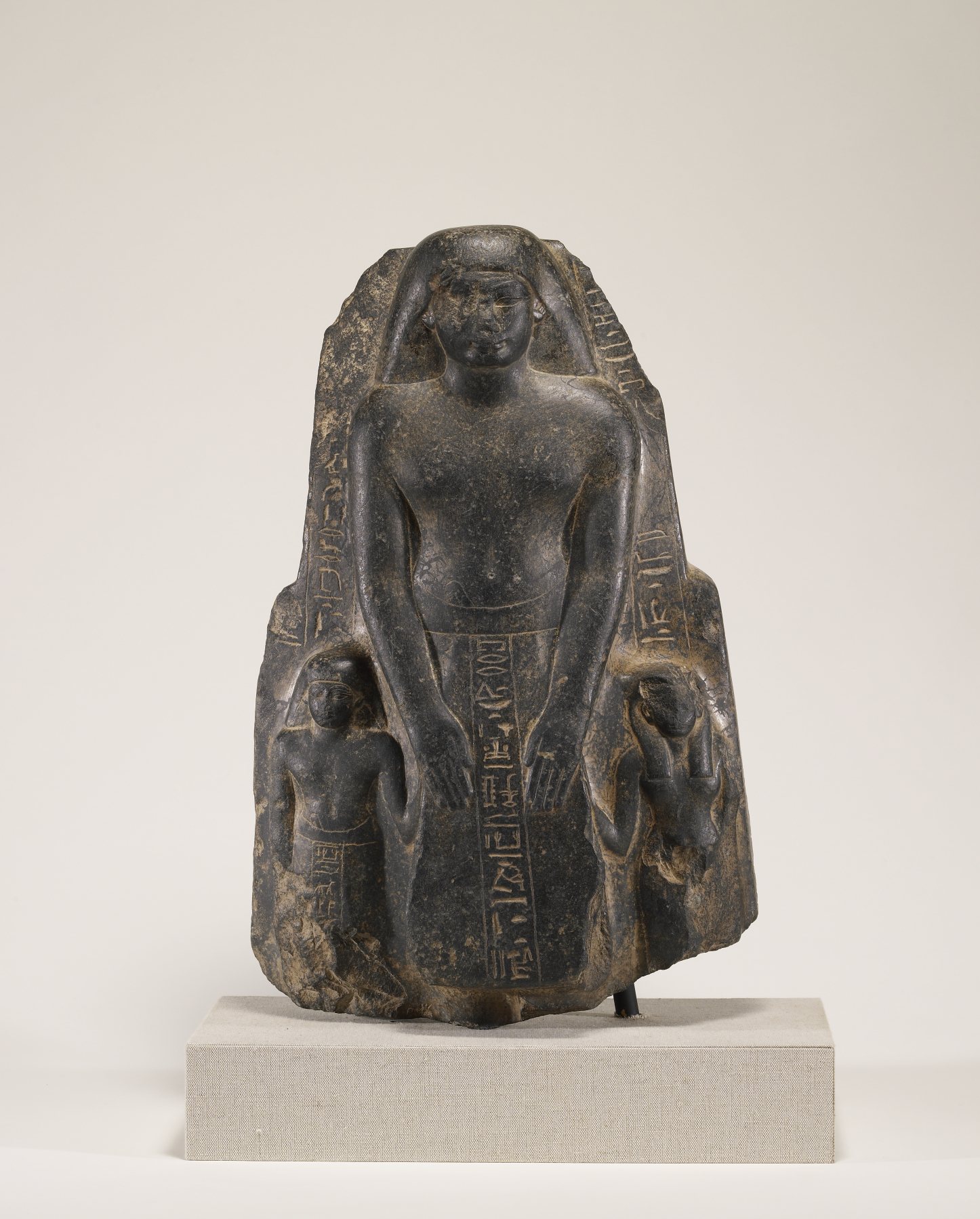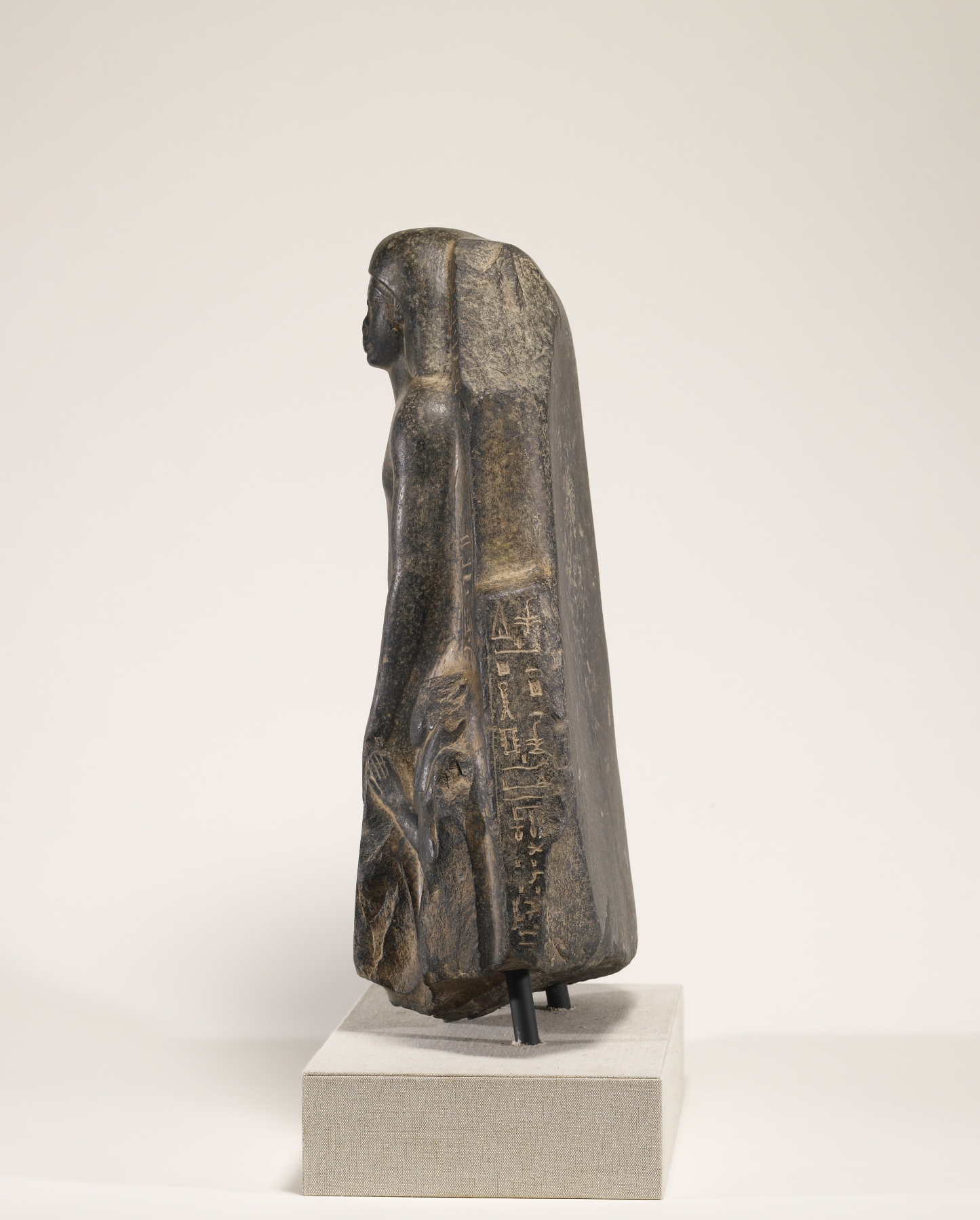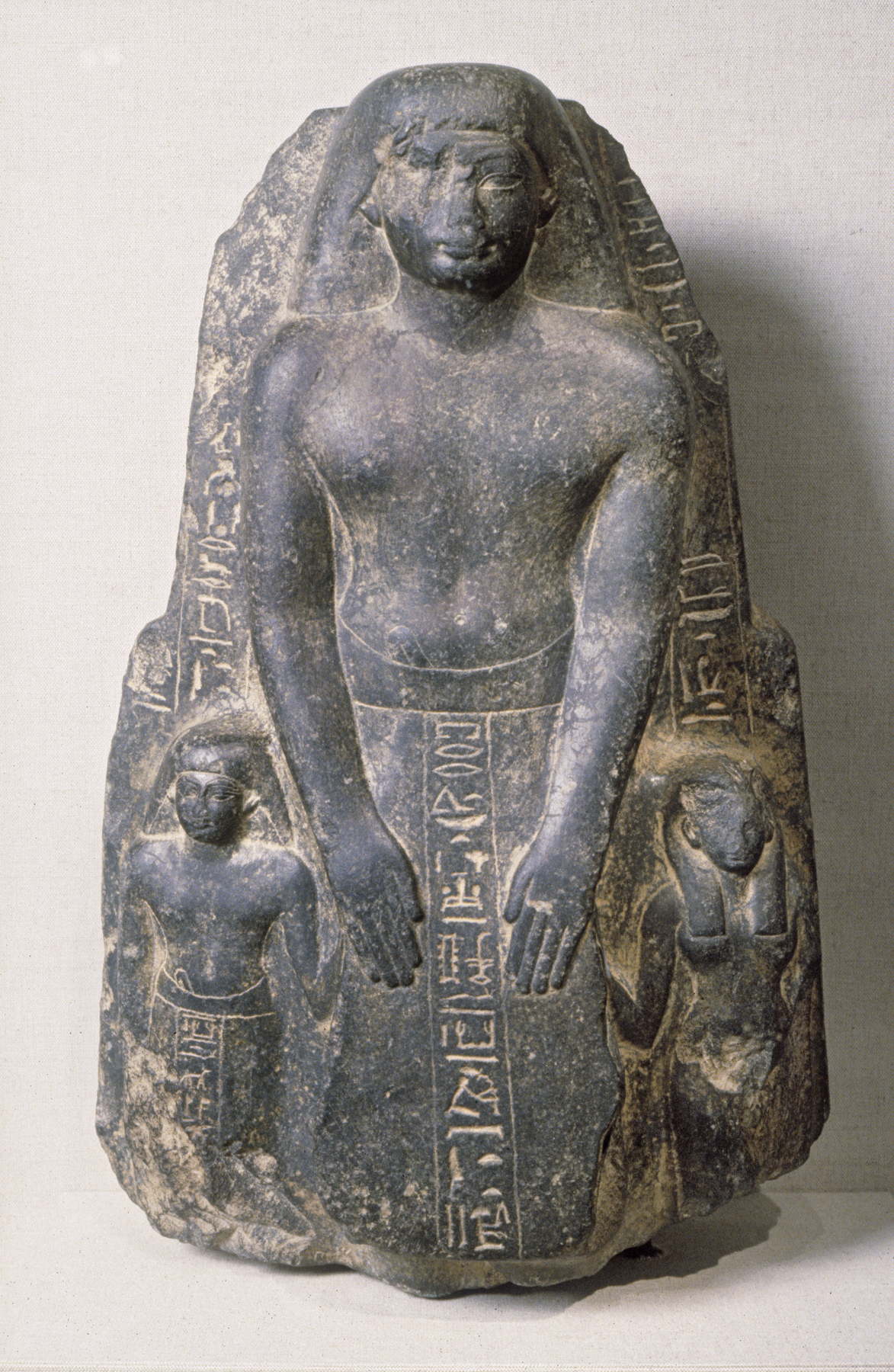Priest Teti with His Family
(Ancient Egypt and Nubia )
Teti the priest was the principal owner of this group statue. In keeping with artistic conventions, he is placed in the center, larger than the two other figures, and receives their supportive gestures. The smaller man is Teti's father, also named Teti, while the woman is the elder Teti's wife, Meket. The reference to the god Ptah of ancient Memphis in the inscription on the front of the younger Teti's kilt suggests that the sculpture may have been dedicated in a temple there. This association with Memphis might also account for the statue's unusual pyramid-like shape, as a similarly shaped sacred monument, called the "benben," was worshiped in the region.
Provenance
Provenance (from the French provenir, 'to come from/forth') is the chronology of the ownership, custody, or location of a historical object. Learn more about provenance at the Walters.
Dikran Kelekian, New York and Paris; Henry Walters, Baltimore, 1926, by purchase; Walters Art Museum, 1931, by bequest.
Conservation
| Date | Description | Narrative |
|---|---|---|
| 7/14/1967 | Treatment | cleaned |
| 7/20/1970 | Treatment | cleaned |
| 6/24/1971 | Treatment | cleaned |
| 6/23/1978 | Treatment | cleaned |
| 9/6/1998 | Examination | survey |
| 11/10/1999 | Treatment | cleaned |
| 6/26/2001 | Treatment | cleaned |
Geographies
Egypt, Memphis (Place of Origin)
Measurements
21 5/8 x 13 3/4 x 7 5/16 in. (55 x 35 x 18.5 cm)
Credit Line
Acquired by Henry Walters, 1926
Location in Museum
Accession Number
In libraries, galleries, museums, and archives, an accession number is a unique identifier assigned to each object in the collection.
In libraries, galleries, museums, and archives, an accession number is a unique identifier assigned to each object in the collection.
22.163






